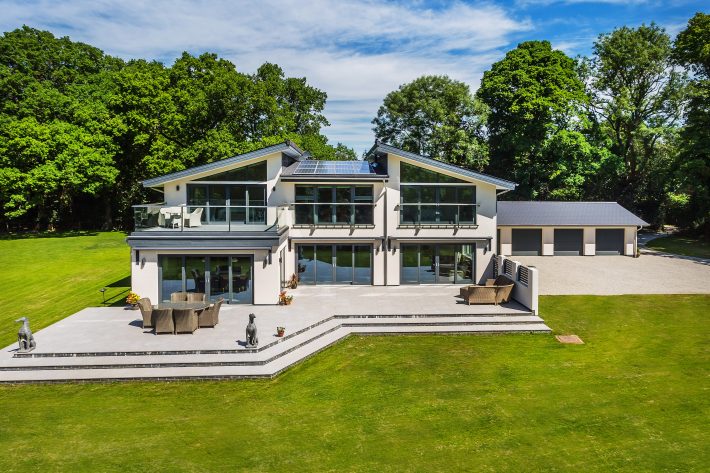Self Build Advice: FOCUS – Sustainability
Categories: Self Build Advice
Building a sustainable home is an essential investment in the future. Energy-efficient design and construction create low impact properties with reduced fuel consumption, a benefit to both homeowner and the environment. To achieve this with your self-build take a look at the information we have gathered below.
Timber Frame:
Building with timber that is sourced from sustainable forests is an eco-friendly choice for the construction of your home; it is renewable and helps to create an air-tight, energy-efficient structure. Timber frame homes have a low thermal capacity and benefit from sunlight heating the air in the rooms, as opposed to the structure, providing incidental heat gain.
Windows:
Combining a timber frame with triple glazed timber windows ensures a thermally efficient home. Wooden windows are the most natural and hardwearing option to glaze your home and perform excellently when it comes to energy efficiency. Timber windows generally boast the best u-values (the measurement of how easily heat can transfer through a building element), especially those with large expanses of glass, as this is the highest performing part of the window.
Design:
A new home needs to be designed to capture available solar energy and minimise heat loss.
- Orientation – Utilise solar gain, position windows to ensure sunlight is flooding into appropriate areas; maximise south-facing windows and place non-habitable rooms on the north side of the house.
- Size – it is important to consider matching space requirements with real use demands.
- Services – to keep pipe run lengths to a minimum, design wet rooms close to one another as this will not only decrease costs but it will also improve operational efficiency.
- Air Tightness – it’s vital to create a home that is as airtight as possible. Uncontrolled air migration is a significant route for heat loss.
Renewable Energy:
Incorporating renewable energy sources into your self build allows you to run your home at a lower cost, as well as reduce your carbon footprint.
- Solar Thermal – a very effective means of heating water for domestic use. It can be used all year but, naturally, the best results are in the warmer months when the sun is more likely to appear.
- Solar Photo Voltaics (PV) – sunlight is converted into electricity through PV panels. The output varies depending on light intensity, so be sure to position panels on south-facing roofs. It is possible to purchase PV roof tiles which can be aesthetically pleasing but are more expensive than panels.
- Wind Turbines – electricity can be generated through wind energy if placed on a suitable site. Turbines should ideally be mounted on masts away from any obstructions in locations with undisturbed airflow and sufficient average wind speed to spin the blades above minimum operating rotation.
- Heat Pumps – heat is extracted from the ground or air and circulated to the heat pump by a refrigerant. Once in the pump, the heated refrigerant is compressed, raising its temperature and the resulting heat can be used for central heating or hot water supply. The typical method of extracting heat from the ground is via a pipe buried in the garden, alternatively, boreholes can be drilled though this is more expensive. Air source heat pumps are popular where there is insufficient ground for pipes, however, their seasonal performance cannot match that of ground source types.


Comments are closed.